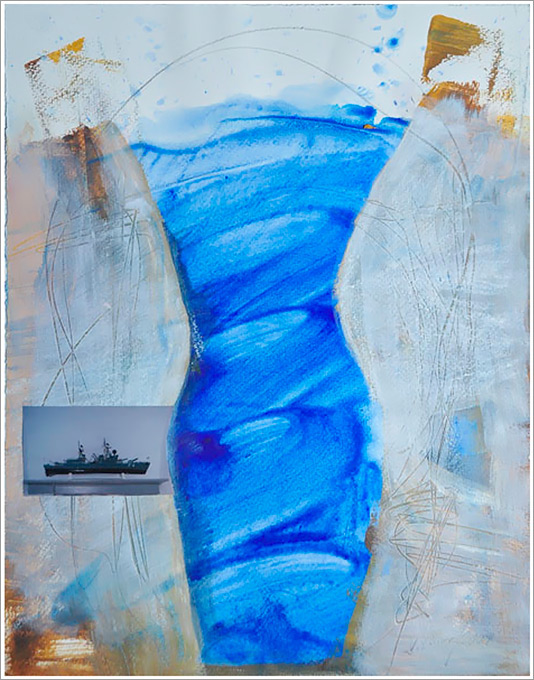Excerpt from a speech by Dr. Hajo Düchting about the artwork of Brigitte van Laar:
…. they are metamorphoses of the being, of transformations, reflections, of micro- and macrocosmos, which do not remind us of anything we know; but looking at them more intensively, they seem to be very familiar to us, because the artist performs with virtuosity to show us something about ourselves.
The artwork of van Laar shows another experience of nature - we could say a pre-industrial one, before man claimed to be ruler about nature. We don’t look on landscapes, created and shaped by man, but on nature in a primitive state on its natural force of the emergence and disappearance. Here the hubris of man, who considers himself as creation’s crowning glory, and who thus lost already his roots, falls silent.
The paining of Brigitte van Laar uncovers with sensitivity and intense creativity an experience of nature, that we have lost a long time ago and that we long to in dark nights.
The artworks on paper show something else: they are more figurative…….. they as well show movements - as being moved, as sensualities, as spiritual conditions, expressions of the self, and reflections of being an artist. They show the joy of feeling, of painting and drawing, of life itself in all facets.
Fields of energy are finally also the sculptures, the so called SHAKTI’s, which are wooden torsos with female shapes. Out of these shapes buckled and bent copper tapes seem to grow into the space and cause shadows. They symbolize energy coming out of the human being, morphogenetic fields, in which we are caught or out of which we draw energy. Copper as conducting material also has been an important medium in the artwork of f.i. Joseph Beuys. …. |
